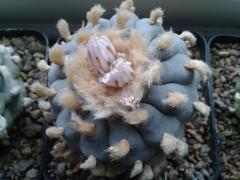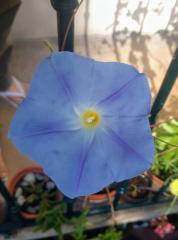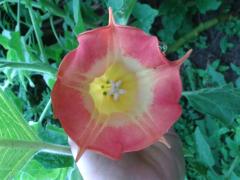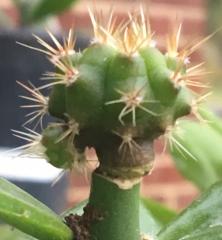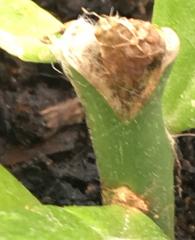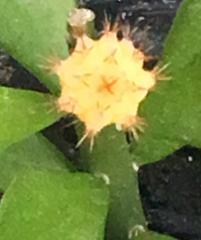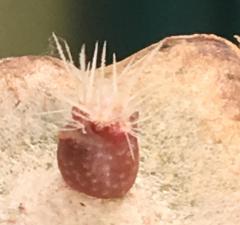-
Posts
1,233 -
Joined
-
Last visited
-
Days Won
44
Content Type
Profiles
Forums
Events
Blogs
Gallery
Store
Everything posted by Inyan
-
I thought I'd start this off with something simple and see if it could grow from here. I know some of you guys and gals have somewhat of an artistic bent. Lets see those pictures. Who has the best picture or artistic idea when it comes to dressing up their plants. Any fairy gardens in here? Anything crazier than that? Share those pictures.
-
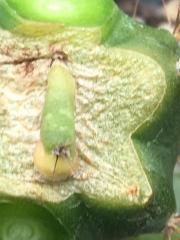
first simultaneous flowering june 29 2017
Inyan commented on ☽Ţ ҉ĥϋηϠ₡яღ☯ॐ€ðяئॐ♡Pϟiℓℴϟℴ's gallery image in Member's Gallery
-
-

Brugmansia sanguinea influorescence
Inyan commented on ☽Ţ ҉ĥϋηϠ₡яღ☯ॐ€ðяئॐ♡Pϟiℓℴϟℴ's gallery image in Member's Gallery
Florida was best for growing B. suaveolens, B. candida, B. aurea, B. versicolor, B. insignis, B. cubensis, and hybrids thereof. It was too hot for the cold loving varieties with the exception of B. arborea var. Ida. That one could take the heat. And as for the offer for seed, if it sets seed definitely keep me in mind. -

Brugmansia sanguinea influorescence
Inyan commented on ☽Ţ ҉ĥϋηϠ₡яღ☯ॐ€ðяئॐ♡Pϟiℓℴϟℴ's gallery image in Member's Gallery
B. sanguinea as a general rule is not self-fertile which means it was most likely pollinated by another variety blooming at the same time. B. sanguinea will produce seed when crossed to B. flava, B. arborea, B. vulcanicola, or another B. sanguinea i.e. not a clone of the same. This is true as a general rule. What species do you have next to it? -
Just wee bit of insight on how I go about producing these hybrid seeds. First, I emasculate each and every female flower before the pistil comes out of the calyx and before the anthers can ripen. I only grow one compatible male Datura wrightii so there is no fear of any other Datura pollinating my Datura metel hybrid girls. I also pollinate my Datura metel hybrids as soon as the emasculation is completed. Using stored dried frozen pollen (stored in micro centrifuge tubes) if need be. Drying and freezing pollen can extend a pollens life from a mere day in some instances to several years so it makes sense to go that extra step of freezing pollen if your serious about your crosses. My Datura wrightii was sourced directly from the wild in the Mojave desert. Seed pods take 60 days to fully mature on average, but if you grow a bit impatient with many crosses... not just Datura you can create a window into the pod to see how things are progressing. When you finally open your pod, you may find that many gametes have aborted. This is of little concern if you get even a few seeds that are mature. As you can see, this particular pod produced ~14 mature seeds.
-
- 6 comments
-
- cotyledon
- dicotyledon
-
(and 4 more)
Tagged with:
-
This baby is bad to the bone. Micro-grafts done on two cotyledon stage seedlings and a wedge graft as well. I'm thinking however this isn't entertaining enough. i might have to order some more seeds and graft 4 cotyledon stage babies together like this. I'm thinking an albino "x" type pattern should be done with the two albino seedlings diagonally opposed to each other and their non variegated counterparts done the same... it might make for an interesting grow out.
- 12 replies
-

Salvinorin A&B found in Turkish Salvia species
Inyan replied to Auxin's topic in Pharmacology, Chemistry & Medicine
While we are talking about tricks to get different species to pollinate... mutilated or cut style approaches also sometimes works. I say leave no trick un-tricked in the quest for a hybrid until of course ones patience or resources run out. -

Salvinorin A&B found in Turkish Salvia species
Inyan replied to Auxin's topic in Pharmacology, Chemistry & Medicine
"In Salvias the pollen must be recognised and accepted before the female makes moisture available for the pollen grain to then imbibe and germinate. This is a very selective process and many interspecific crosses fail at this point." This is where mentor pollen comes into play. Dead S. divinorum pollen is presented to make the pistil receptive. This dead pollen is mixed with the desired species pollen one wishes to use to pollinate. This is of course just one way of doing this or getting around a barrier to pollination. -

Salvinorin A&B found in Turkish Salvia species
Inyan replied to Auxin's topic in Pharmacology, Chemistry & Medicine
http://salvia-hybrids.blogspot.com I present the above for those interested in how to hybridize Salvia. Just because it has not been done with Salvia divinorum does not mean it can not be done. The more varieties that are tried the more likelihood that a compatible species may be found. Just because a single pollination attempt does not garner any seeds it does not mean that the 1000th time you will not get a seed. The more people that try the more likelihood that someone will be successful. For those for whom this instruction is too complicated.... simply planting your S. divinorum in a bed of a different type or species of S. divinorum may create a hybrid if the bees decide to do the work for you. Most importantly, you must collect the seed from your S. divinorum and grow them out. Of course, if the cross can only be done with S. divinorum as the pollen donor.... you might want to have a bed of S. divinorum with a single specimen of another species in the middle of your bed of S. divinorum. For the record, I think emasculation is the much better route to go, but I leave no option unchecked in such a goal.... -
-

Salvinorin A&B found in Turkish Salvia species
Inyan replied to Auxin's topic in Pharmacology, Chemistry & Medicine
Chromosome numbers can be changed via the application of colchicine to the plant itself or seeds. There are other chemicals available that will also do the same so what one should be looking for in chromosome counts is anything with either the same number of chromosomes or double those chromosomes. With Hemerocallis there have been crosses made with triploids after many many attempts. What one has to understand is that even when the chromosome counts don't match up... there is always the possibility of unreduced pollen and many other variables that can come into play. Things like using a mentor pollen, donor pollen, pollen cocktails, and the like. The bottom line is I'd be excited to see any species mixed in with S. divinorum and given just two seeds of a viable hybrid such as this I could extend those two seeds into many plants and produce a small field of f2 seedling followed by a larger field of f3 seedlings. Breeding cold hardiness into a S. divinorum type hybrid... would that not be nice? -

Salvinorin A&B found in Turkish Salvia species
Inyan replied to Auxin's topic in Pharmacology, Chemistry & Medicine
Why could you not go along both routes at the same time? To selectively try to breed for a better S. recognita utilizing a large batch of seed which may show some variability could indeed take many generations and while it would be cool to do so with a completely different species on its own, what would it hurt to try to do the same through hybridization efforts at the same time? When S. divinorum has a status in many places that is less than legal getting those genes into another species via hybridization would be a boon for those wishing to work with that species where they can't as they would effectively be working with a hybrid. Introducing S. divinorum genes into S. recognita one could then do your standard F2, f3, f4, f5 sibling crosses to select out the strongest from the batch each generation. Many serious hybridizers not only work these f2, f3, f4, etc. type crosses, but they would also breed back to each parent as well to stabilize traits from either parent. The idea being to make a cross like this... (S. recognita x S. divinorum) x S. divinorum. While also making the cross (S. recognita x S. divinorum) x S. recognita. One could very easily then go on to create 2 more lines with these backcrosses to each parent. Never mind the reverse crosses (S. divinorum x S. recognita) x S. recognita and (Saliva divinorum x S. recognita) x S. divinorum could also be done as mitochondria and chloroplasts are donated from the maternal side I think we would be remiss if we did not also count those reciprocal crosses as well as good potentials. With that being said, we could in theory have 5 good working lines of of hybrids going trying to selectively improve and introduce new traits into the mix while also working with each species separately trying to increase the desirable traits there as well. So, all told we would looking at 7 different lines. Given how hard it is to get some hybrids started... I would think the sooner the better to get started on any of these lines. Then there is the logistics of testing the material from each of these 7 different lines to determine which ones to breed with. If I can grow 10K Brugmansia from seed to maturity in a small space... I can only imagine how many more Salvia could be grown in that same small space. An important question though... do the two species have the same chromosome number or can they be easily made to have the same chromosome number? If not as one member suggested... another species with the appropriate number of chromosomes either the same or double would need to be used to most easily facilitate a hybrid cross outside of protoplast fusion techniques. -
-
Looks like a very fine specimen and well worth the ride. My day was not nearly as adventurous. I spent a few hours working with the roses trying to get some of my cuttings into pots. Then I spent a few wee moments repotting my (SS02 x SS01) x Red Grandi seedlings into a medicine wheel type formation. I changed the soil out for those as well as the soil I had them in was almost 80% chicken/cow manure and as such it was holding in way too much moisture and stunting the roots. On a side note, the roots that were there were very thick for the most part. Just very short as well and not conducive to fast growing. So, while I did not kill my plants, I did give it a valiant effort to do so. I still have some pachanoi growing in this same mixture of mostly manure. The little red guy on top of that pachanoi is another (SS02 x SS01) x Red Grandi I am trying to push. I like growing my seedings in full sun which gives them a red color until they get a bit bigger. I am going to have to dig them out tomorrow and fluff the soil up as well as I simply don't think this experiment has what it takes to kill them and rather than loose them now... I think it behoves me to simply fluff their soil up as well.
-
- 3 comments
-
- zelly hybrid
- zelly
-
(and 4 more)
Tagged with:
-
- 7 comments
-
Forgive me for the long delay in posting an update to this incredibly tiny graft. I know you are all on pins and needles waiting for it to fail. That last was said jokingly if there is any question. With that said and without further delay I present to you one of the worlds smallest multiple grafts done simultaneously.... She is alive both Dr.Jekyl and Hyde are growing like a Demon on Steroids. Sadly, the growing points are a bit further apart than I had wanted them to be as you can now see more clearly.
- 12 replies
-
I like how we all have our own take on exact days to leave the cut to dry or whether to water after "x" number of weeks or not. What is important to me as a gardener is to find many ways to kill my plants. Only then will I know how far I can push them and how far I can not push them. With that said, @Pedropark has a method that will most assuredly work as well.
-
Great to have you here. Your pictures made me miss living in Belgium. Don't worry about how to root these T. bridgesii. Simply find some good gardening soil and stick your cacti in it. You can take your cuts now and dip the cut ends in sulfur dust. Allow them to dry over the weekend and then place in that nice gardening soil you bought. Don't worry about watering for the first few weeks. Just let it sit in that soil dry. After 2 weeks you can water so that the soil is wet. If you want to spruce things up a bit you can even add 50% perlite to your gardening soil. For what its worth, I've grown and rooted many T. brigesii this way with no ill effects. There certainly is no need to wait till any particular time of year for taking a cutting.
-
-
I select all my seedlings I want to graft and put them in cups of water, shot glasses, etc. to soak for 30 minutes before I make a graft like this. I make all my vertical cuts for a graft like this next. I start cutting just above the spines and stop just below them I then make my horizontal cuts last by cutting directly underneath the last spine. I then remove each wedge of tissue and quickly make my seedling cuts trying to give as large a surface area as possible while retaining as much tissue as possible as well. This usually entails me cutting the bottom portion closest to the roots but the most swollen. From there, I simply place the seedling where the wedge of tissue has been removed at the bottom. I then slide the seedling up just a bit so the ledge or seat is not touching the seedling. I find that sometimes the ledge will grab ahold of the seedling as it dries out and pull the seedling just far enough from the stock that the graft will not take. It is best to use an actively growing stock in my opinion if your plan on grafting seedlings or areoles to areoles like this. As long as that is taken care of and you don't water either for a few days until the wounds have dried and calloused over then you should find good success with this method. It never hurts to make a humidity dome either to keep this type of graft in if your weather is not too humid. I use plastic bottles for such which are nice given that you can slowly change the humidity by loosening and removing the cap. A cut into the side of the bottle is of course needed to enable the graft to be placed inside which I tape up so I don't have to worry about it.




